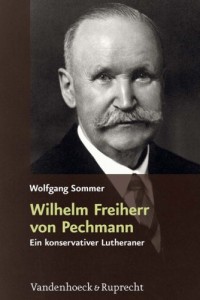ACCH Quarterly Vol. 17, No. 4, December 2011
Review of Ulrich Bräuel und Stefan Samerski, eds., Ein Bischof vor Gericht: Der Prozeß gegen den Danziger Bischof Carl Maria Splett 1946 (Osnabrück: fibre Verlag, 2005), 313pp. ISBN: 3-929759-98-5.
By Diana Jane Beech, University of British Columbia
Picture the scene: It is 1933 in the Free City of Danzig (Gdańsk); a semi-autonomous city-state situated between Poland and Germany, under the special protection of the League of Nations. Life in the Free City up until now had been peaceable, with the majority of the population from Germanic heritage, yet represented abroad by Poland in an effort to ensure sufficient Polish access to the sea. For a young German Roman Catholic pastor in the Free City, a sympathetic attitude towards the Poles was indispensable, as was a knowledge of the Polish language. This was characteristic of the early career of Carl Maria Splett (1898-1964). Following his ordination into the Roman Catholic Church in 1921, he returned to Danzig in 1924 to serve the city’s mixed German and Polish congregations.
Once the local National Socialist (Nazi) Party succeeded in taking over the government of Danzig in 1933, however, the dynamics of Splett’s ministry changed dramatically. Despite pressure from the Nazis to install their own candidate as Bishop of Danzig following Bishop Edward O’Rourke’s resignation in 1938, Carl Maria Splett was appointed to the post by Pope Pius XII. Following the annexation of Danzig to Germany in 1939, Splett was further appointed the Apostolic Administrator of the diocese of Culm. He was, thereby, firmly forced into a double-bind, in which he endeavoured to maintain friendly relations with the Poles on the one hand, and the Nazi government on the other.
Initially, Splett spurned Nazi demands and refused to prohibit the use of Polish in his diocese. Revenge murders by the Nazis of Polish-speaking pastors within Splett’s bishopric nevertheless forced him to retract his decision. He henceforth banned Polish from all churches under his jurisdiction in the spring of 1940. Under increasing pressure from the Nazi regime, Splett most controversially replaced Polish clergy with German priests, and ordered the complete removal of Polish signs and names from his diocese. In spite of all this, however, Splett is still said to have unofficially continued to support priests who continued to use the Polish language, and provided financial aid to the families of those priests arrested and murdered by the Nazis.
Splett remained in Danzig throughout the Second World War and continued to work both with and against the Nazi regime in an attempt to find his own modus vivendi to survive the war. Once Soviet troops captured the city in March 1945, Splett was arrested but released shortly afterwards. It was not until August 9, 1945, that Polish Cardinal August Hlond called for Splett’s resignation. When he refused to give up his bishopric, Polish officials arrested Splett and put him on trial for collaborating with the Nazis and oppressing the Polish people. Splett was eventually found guilty and sentenced to eight years in prison on February 1, 1946.
 It is this trial which is the focus of Ulrich Bräuel and Stefan Samerski’s edited volume, Ein Bischof vor Gericht: Der Prozeß gegen den Danziger Bischof Carl Maria Splett 1946. As Bräuel and Samerski make clear in their introduction to the volume, not only has Splett’s own debatable conduct in Nazi-occupied Danzig made him one of the most disputed figures in Polish and German history, but his trial by Poland’s post-war communist regime has sparked recent debate as to whether Splett’s case was a convenient way for the communists to take up battle against the Church as a whole. In an effort to uncover whether Carl Maria Splett fell victim to the ideological agendas of two consecutive totalitarian regimes, Bräuel and Samerski have collected essays from both Polish and German academics from a wide variety of disciplines, which examine Splett’s own history, traditions, and theology. As well, his trial is analysed from both its political and legal perspectives. Even today, there are those who believe Splett acted honourably under the precarious conditions of Nazism. They refer to his trial and lengthy prison sentence in order to highlight the injustices he endured under communism. His critics on the other hand continue to view his punishment as confirming their condemnation of Splett and his anti-Polish directives during the war. It is the editors’ intention, therefore, to investigate both Splett’s actions and those of the Polish authorities that condemned him so that they can begin to reconcile the disparity of opinions that surround Splett’s life and trial.
It is this trial which is the focus of Ulrich Bräuel and Stefan Samerski’s edited volume, Ein Bischof vor Gericht: Der Prozeß gegen den Danziger Bischof Carl Maria Splett 1946. As Bräuel and Samerski make clear in their introduction to the volume, not only has Splett’s own debatable conduct in Nazi-occupied Danzig made him one of the most disputed figures in Polish and German history, but his trial by Poland’s post-war communist regime has sparked recent debate as to whether Splett’s case was a convenient way for the communists to take up battle against the Church as a whole. In an effort to uncover whether Carl Maria Splett fell victim to the ideological agendas of two consecutive totalitarian regimes, Bräuel and Samerski have collected essays from both Polish and German academics from a wide variety of disciplines, which examine Splett’s own history, traditions, and theology. As well, his trial is analysed from both its political and legal perspectives. Even today, there are those who believe Splett acted honourably under the precarious conditions of Nazism. They refer to his trial and lengthy prison sentence in order to highlight the injustices he endured under communism. His critics on the other hand continue to view his punishment as confirming their condemnation of Splett and his anti-Polish directives during the war. It is the editors’ intention, therefore, to investigate both Splett’s actions and those of the Polish authorities that condemned him so that they can begin to reconcile the disparity of opinions that surround Splett’s life and trial.
The volume begins with a short but polemical piece by Jan Bernard Szlaga (21-24), who examines the historical legacy of Bishop Splett and firmly proclaims his belief that Splett was loyal to the Poles, yet prohibited by his powerlessness in the face of Nazi tyranny. Szlaga’s opinion piece is swiftly followed by an overview of the so-called ‘Splett debate’ in Poland by Thomas Urban (25-44), who offers a survey of the Polish reception of Splett, from his branding as a “Hitlerist” in the immediate post-war era to the steps taken towards redeeming his reputation from 1989 to the early twenty-first century.
Stefan Samerski examines the historical context surrounding Bishop Splett’s controversial behaviour during the war (45-93). He provides a comprehensive account of Splett’s formative years, his professional life in the Church, and the influences of ecclesiastical and international politics on his wartime actions. Ulrich Bräuel then provides a detailed analysis of Splett’s trial (95-143), including in his report German translations of the original Polish indictments against the bishop.
The specifically ecclesiastical influences on Splett’s life and trial are covered in the volume by both Thomas A. Amann, who writes on the aspects of ecclesiastical law that affected Splett’s case (145-169), and by Daniel Fickenscher, who provides an insight into how national languages have been traditionally used in Roman Catholic church services and confessions (172-204). Hans-Werner Rautenberg examines the problem surrounding language usage even further in his chapter on the patchwork nature of ethnicities in western Prussia and the impact that this particular mosaic of languages, cultures, and beliefs has had on Catholic liturgical practice in the area (206-246).
Since the analysis of the historical contexts surrounding Splett’s life and trial would not be complete without an appreciation of the political climate in which he was prosecuted, the volume ends with a focus on the communist Polish state, which determined Splett’s fate. Miroslaw Piotrowski’s examination of the Church and the state in Poland in the initial years after the Second World War offers a chronological account of the state’s increasing hostility against the Catholic Church (247-261). This is followed by Lukasz Kamiński’s study on propaganda trials in Poland between 1945 and 1956 (263-280), which provokes thought as to how Splett’s own case fits into the trope of such ‘show’ trials. The final word in the volume is, however, left to Stephan H. Pfürtner (281-313), who considers the case of Bishop Carl Maria Splett as a “Zeitzeugnis”, or a true product of its time. By demonstrating the fine boundaries between secular and spiritual obligations, and between duties to two distinct nationalities and cultures, Pfürtner closes the volume with the assertion that Splett’s life was ultimately shaped by his love for humanity—an expression of the love of Jesus Christ which he preached about on a daily basis.
Ein Bischof vor Gericht encourages its readers, before defending or condemning his actions, to view Carl Maria Splett as a figure firmly trapped by the competing demands of his Catholic tradition, his almost dual nationality, and, most importantly, by the consecutive political climates of National Socialism and communism in which he strove to exist. What Bräuel and Samerski’s edited work has done, therefore, is expose the importance of thoroughly appreciating the historical contexts behind not just the lives of churchmen in Nazi-occupied territories, but also behind their post-war legacies, which may have been shaped and distorted by post-war ideologies and political agendas. All in all, this collection of essays should be praised for shedding much-needed light on the historical standing of churchmen such as Carl Maria Splett, who acted and subsequently defended their actions in the best way their historical predicaments allowed them to.


